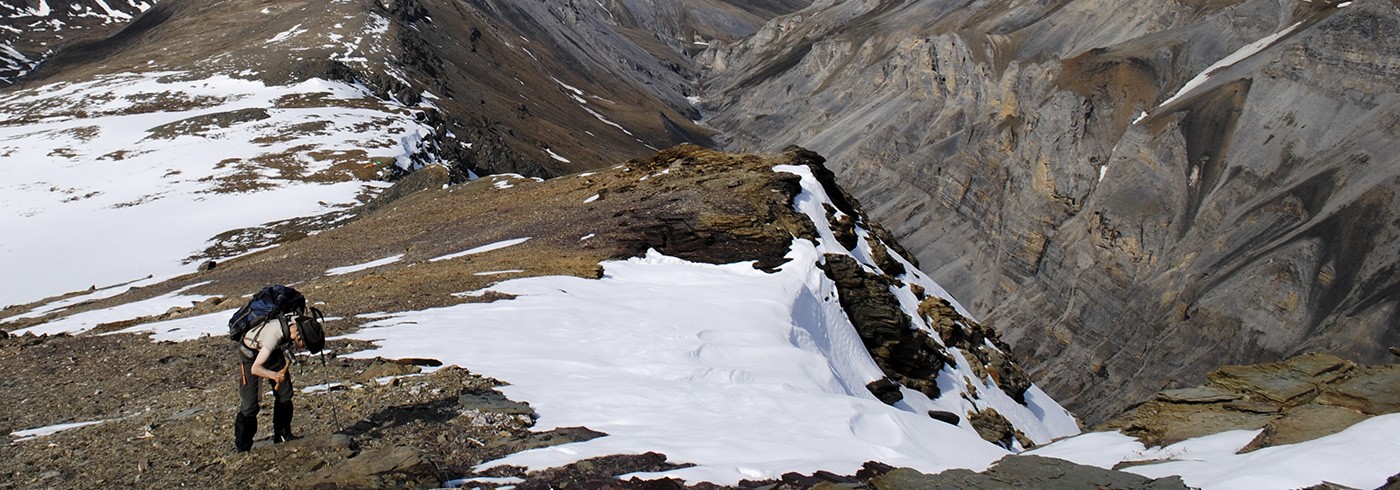Exploring Alaska to find the lost part of the Caledonides
9 June 2014 - 19 June 2014
Carl Hoiland looking for sandy intervals within the Apoon volcanics on Amawk Mountain. View is to the west. Mount Doonerak is the high peak in the upper left. Amawk creek is seen to the lower-right draining northwest into the North Fork Koyukuk River valley. The Cambro-Ordovician Apoon volcanics (left, dark) are unconformably overlain by Mississippian to Permian carbonates (right, light grey) and siliciclastics (right, brown), all of which is overthrust by the Endicott Mountain Allochthon (top-right, grey). Photo: Justin Strauss
New discoveries in arctic geology indicate that the Caledonian mountain range once extended even farther north before the continents drifted apart and the Atlantic and Arctic oceans opened up. Where the northern part of the mountain range has since been displaced to, remains unclear. However, the most likely theory is that the northern part of the range was forced aside to somewhere in the central part of the Brooks Range in Alaska – a barren and remote place that no geologist has been able to visit or study for 25 years, due to a strict ban on air travel.

Carl Hoiland and Lyle Nelson, with view of Mount Doonerak in distance rising above Wien Mountain. Photo: Justin Strauss
During the summer expedition we were allowed to travel into the area to collect geological samples as part of a larger cooperative project. To test our theory, we wanted to see whether volcanic rock in the Brooks Range could be tied to the Caledonian mountain range. The aim of the expedition was consequently to re-assess the age, chemistry, and tectonic significance of an array of volcanic rock types.
The expedition proved to be a success, although we did have our share of adversity, with illness and inclement weather hampering the work. At the end of the expedition, we returned home with roughly 200 kg of key rock samples, which we will now use to test our preliminary hypotheses and determine whether Mount Doonerak and central Alaska can be tied to the Caledonian orogeny in north-western Europe. However, as is so often the case when working in any area of research, we were able to study and describe only a small part of the region, with the result that many important questions remain unanswered while new questions have emerged, the answers to which will require additional fieldwork.








